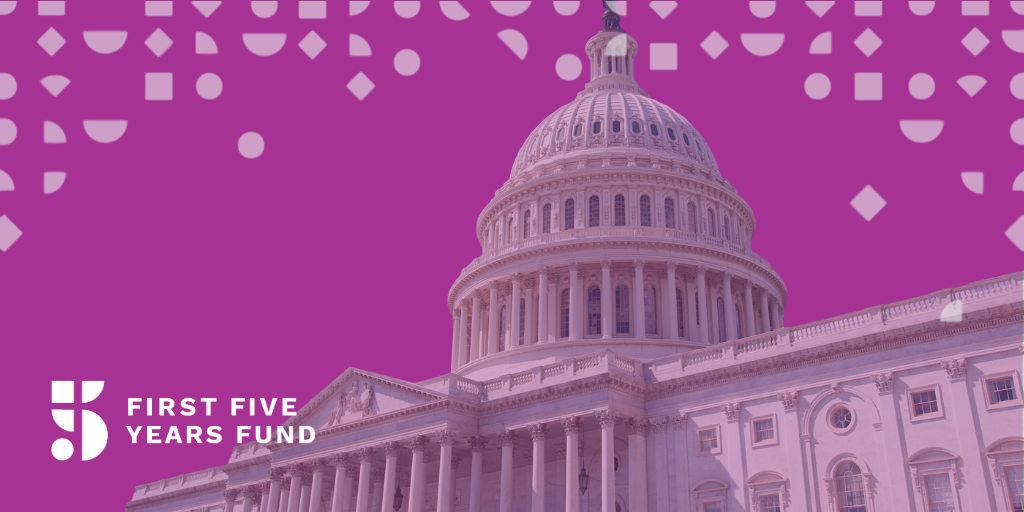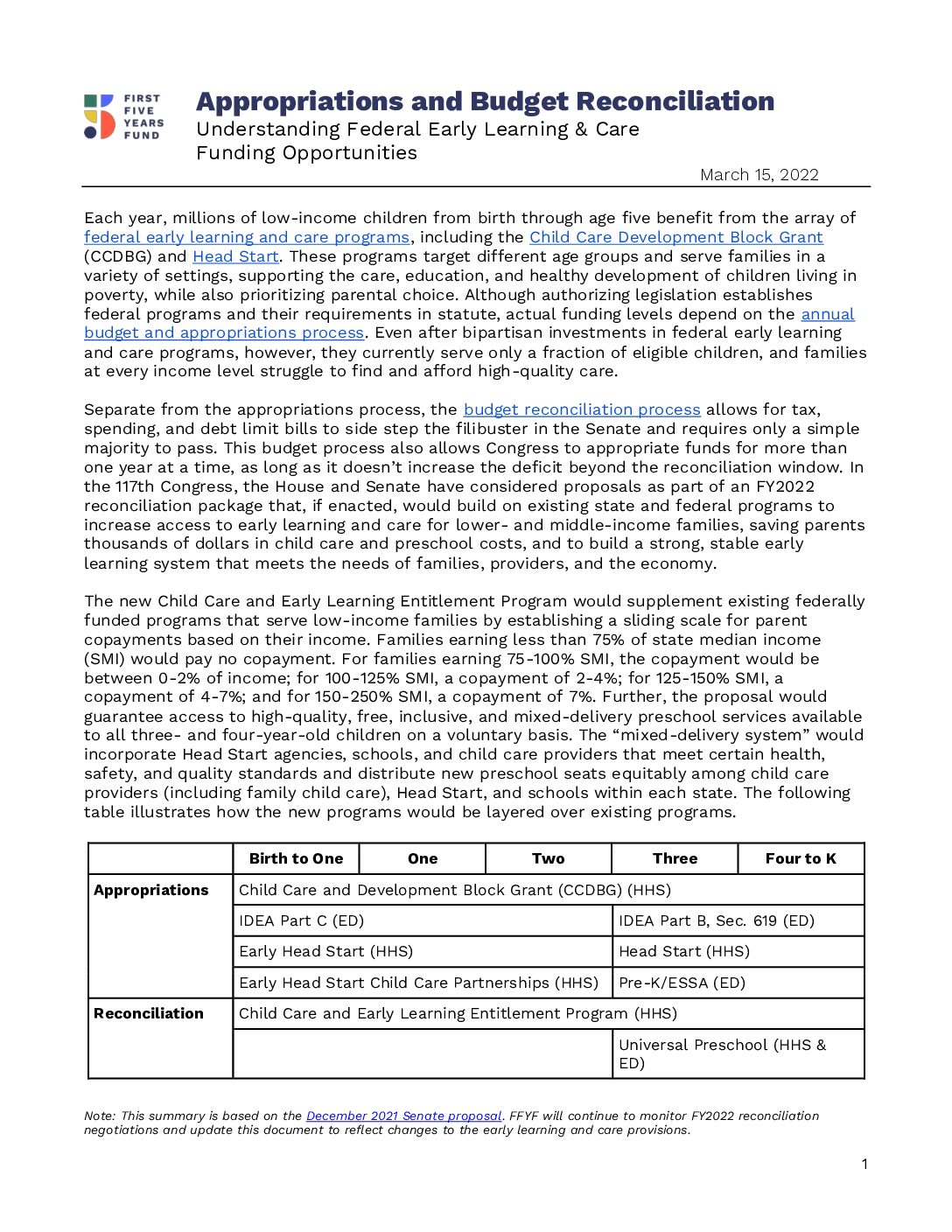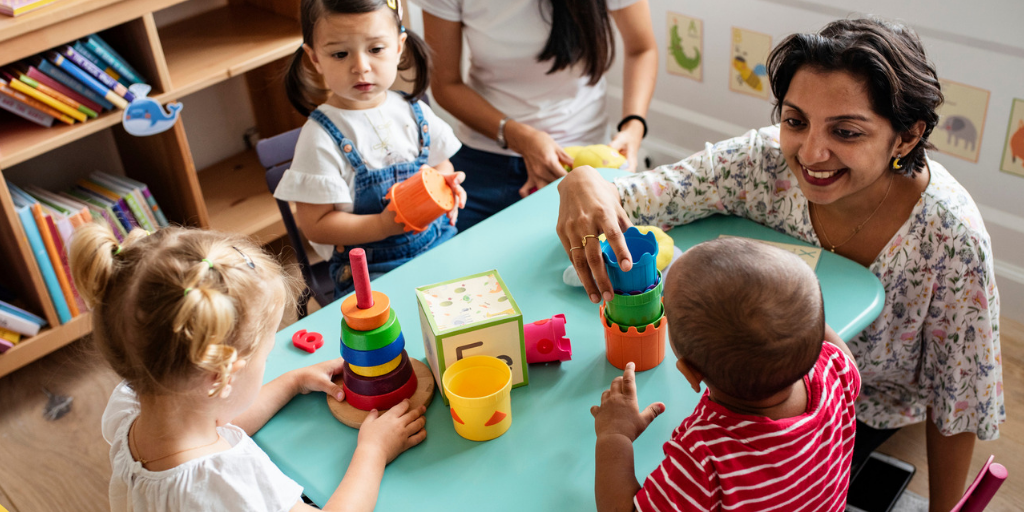Appropriations and Budget Reconciliation: Understanding Federal Early Learning & Care Funding Opportunities

Updated March 15, 2022
Each year, millions of low-income children from birth through age five benefit from the array of federal early learning and care programs, including the Child Care Development Block Grant (CCDBG) and Head Start. These programs target different age groups and serve families in a variety of settings, supporting the care, education, and healthy development of children living in poverty, while also prioritizing parental choice. Although authorizing legislation establishes federal programs and their requirements in statute, actual funding levels depend on the annual budget and appropriations process. Even after bipartisan investments in federal early learning and care programs, however, they currently serve only a fraction of eligible children, and families at every income level struggle to find and afford high-quality care.
Separate from the appropriations process, the budget reconciliation process allows for tax, spending, and debt limit bills to side step the filibuster in the Senate and requires only a simple majority to pass. This budget process also allows Congress to appropriate funds for more than one year at a time, as long as it doesn’t increase the deficit beyond the reconciliation window. In the 117th Congress, the House and Senate have considered proposals as part of an FY2022 reconciliation package that, if enacted, would build on existing state and federal programs to increase access to early learning and care for lower- and middle-income families, saving parents thousands of dollars in child care and preschool costs, and to build a strong, stable early learning system that meets the needs of families, providers, and the economy.
The new Child Care and Early Learning Entitlement Program would supplement existing federally funded programs that serve low-income families by establishing a sliding scale for parent copayments based on their income. Families earning less than 75% of state median income (SMI) would pay no copayment. For families earning 75-100% SMI, the copayment would be between 0-2% of income; for 100-125% SMI, a copayment of 2-4%; for 125-150% SMI, a copayment of 4-7%; and for 150-250% SMI, a copayment of 7%. Further, the proposal would guarantee access to high-quality, free, inclusive, and mixed-delivery preschool services available to all three- and four-year-old children on a voluntary basis. The “mixed-delivery system” would incorporate Head Start agencies, schools, and child care providers that meet certain health, safety, and quality standards and distribute new preschool seats equitably among child care providers (including family child care), Head Start, and schools within each state. The following table illustrates how the new programs would be layered over existing programs.

Even if these programs are established through reconciliation, sustained funding for existing programs will be vital as they continue to serve low-income families and children with disabilities or developmental delays. The Congressional Budget Office estimates that absent steady funding for Head Start, for the 2022-2031 period, it would cost an additional $8 billion for the child care program and $11 billion for the preschool program. Likewise, states who opt in to the child care program would still rely on CCDBG for out-of-school care for children ages 6-13 (spending for children under 6 would be capped at 10%), and states who opt out would receive CCDBG funding as they do today. Further, funding for the two Individuals with Disabilities Education Act (IDEA) programs that serve young children, Part C and Part B, Sec. 619, provides access to inclusive early interventions that ensure children receive the appropriate services and supports they need to succeed in school and avoid costly interventions later in life. The table below summarizes funding amounts being considered as part of the annual appropriations and reconciliation negotiations.

Subscribe to FFYF First Look
Every morning, FFYF reports on the latest child care & early learning news from across the country. Subscribe and take 5 minutes to know what's happening in early childhood education.




